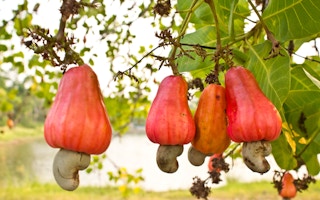Forests may be the green investment with the richest returns for humankind, according to new research.
While one study outlines the ways in which forests provide food, fuel, shelter and a safety net for more than a billion humans, a separate one confirms that a canopy of older, sturdier trees helps protect the saplings and juvenile growths against heat and drought.
An international team of more than 60 scientists collaborated on a report − Forests, Trees and Landscapes for Food Security and Nutrition: a Global Assessment Report − just published by the International Union of Forest Research Organisations (IUFRO).
“Large-scale crop production is highly vulnerable to extreme weather events, which may occur far more frequently under climate change,” says Christoph Wilburger, who co-ordinated the IUFRO initiative. “Science shows that tree-based farming can adapt far better to such calamities.
Key role
“We know that forests already play a key role in mitigating the effects of climate change. This report makes it very clear that they also play a key role in alleviating hunger and in improving nutrition.”
Climate scientists tend to consider forests as “carbon sinks” − agencies that soak up carbon dioxide from the atmosphere and that could help counter the rising levels of the greenhouse gas released by the burning of fossil fuels.
“
We know that forests already play a key role in mitigating the effects of climate change. This report makes it very clear that they also play a key role in alleviating hunger and in improving nutrition.
Christoph Wilburger, who co-ordinated the IUFRO initiative
But forests also have a role in water storage and in protecting land from the forces of erosion.
Forest fruits and nuts are an important nutrition source for many. The iron content of the dried seeds of the African locust bean and raw cashew nut can, for instance, match the flesh of chickens. And forests are shelter for sources of wild meat, fish and edible insects.
In developing countries, around 2.4 billion households use wood and charcoal for cooking and heating, and forests deliver a multitude of what are sometimes called ecosystem services − such as supporting bees and other crop pollinators, delivering fodder for village livestock, and protecting streams and watersheds.
Worldwide, the lower the levels of prosperity, the higher the dependence on forests. In the Sahel region of Africa south of the Sahara, trees contribute on average four-fifths of household income − mostly through shea nut production.
The report also points out that the expansion of agricultural land accounts for 73 per cent of forest loss worldwide.
Increasing threat
But if forests keep people safe, what keeps a forest in leaf when drought, extremes of heat and the attrition of climate change are also an increasing threat?
Solomon Dobrowski, of the Forest Landscape Ecology Lab at the University of Montana, and colleagues report in Global Ecology and Biogeography that the regeneration of future forests could depend on shelter from the extensive canopy provided by the adult trees in mature woodland.
Juvenile trees are more shallow-rooted and more vulnerable to high winds, intense sunlight, high temperatures and extended drought. Without a shady, protective canopy, they could suffer. And without juvenile trees, a forest could only decline.
Professor Dobrowski warns: “Extensive losses of forest canopy from disturbances such as severe wildfire will amplify the effects of climate change.”










